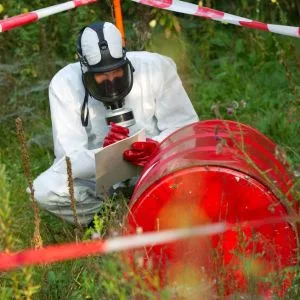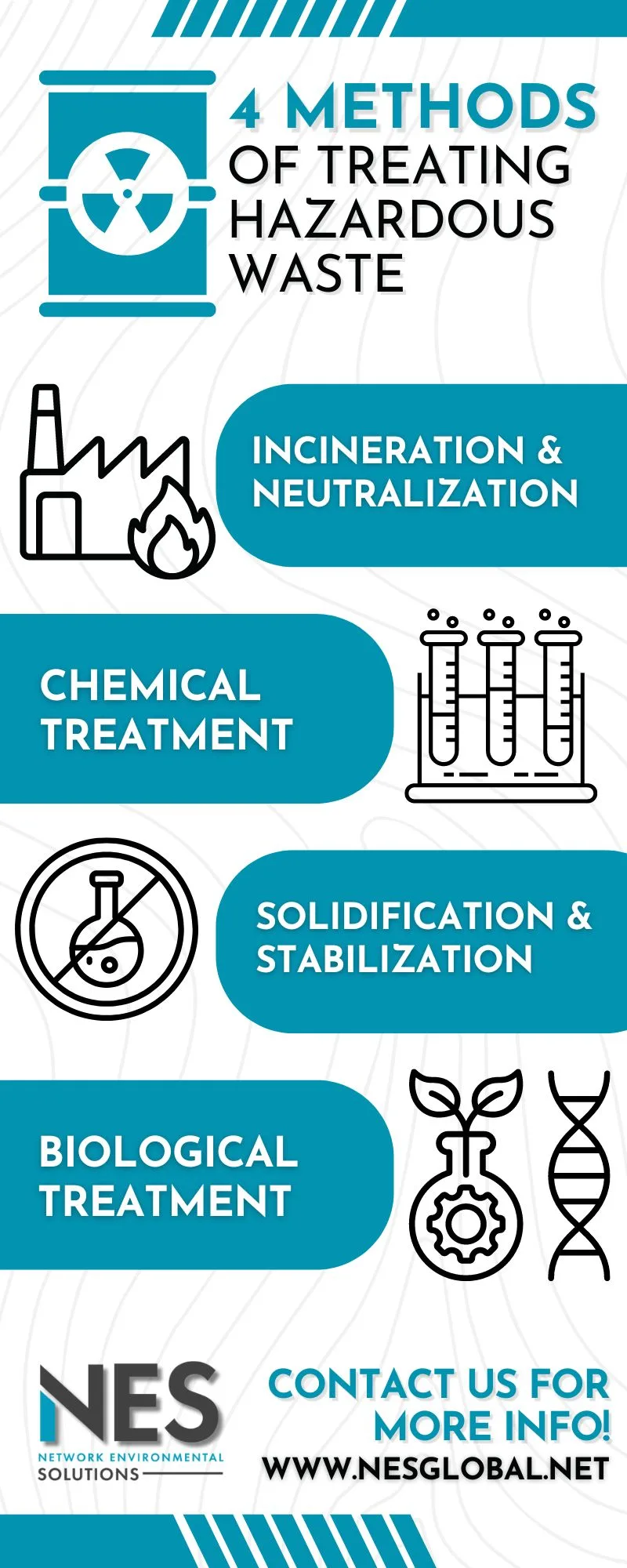
4 Methods of Treating Hazardous Waste

Managing hazardous waste is a critical responsibility for businesses and industries that generate these materials. Proper hazardous waste management not only ensures compliance with regulations but also protects the environment and public health. At NES, a nationally recognized leader in environmental, health & safety (EH&S) training and consulting, we emphasize the importance of effective hazardous waste disposal. Here, we explore four methods of treating hazardous waste to help businesses manage their waste responsibly.

Incineration
Incineration is a widely used method for hazardous waste disposal. This process involves burning waste at high temperatures, effectively reducing its volume and neutralizing harmful substances. Incineration is particularly effective for organic wastes, such as solvents, pharmaceuticals, and certain industrial chemicals. The high temperatures break down complex molecules, transforming them into simpler, less harmful compounds.

Chemical Treatment
Chemical treatment involves using chemical reactions to convert hazardous waste into less dangerous substances. This method is often used for neutralizing acids and bases, oxidizing toxic compounds, or precipitating heavy metals from wastewater. Chemical treatment can be tailored to specific types of hazardous waste, making it a versatile option for various industries. Properly managed, this method can significantly reduce the toxicity and volume of hazardous waste, making it safer for final disposal.

Solidification and Stabilization
Solidification and stabilization are techniques used to convert liquid or semi-liquid hazardous waste into a solid form. Solidification involves mixing the waste with binding agents, such as cement or lime, to create a solid mass. Stabilization, on the other hand, involves adding materials that chemically react with the waste to reduce its mobility and toxicity.

Biological Treatment
This method, also known as bioremediation, is effective for treating organic contaminants such as petroleum hydrocarbons, pesticides, and certain industrial solvents. Microorganisms metabolize these substances, transforming them into less harmful byproducts. Biological treatment can be conducted in situ (at the contamination site) or ex-situ (in a controlled environment), depending on the nature and extent of the contamination.

Effective hazardous waste management is essential for safeguarding the environment and public health. At NES, we provide comprehensive EH&S training and consulting services to help organizations navigate the complexities of hazardous waste management. Contact us today to learn more about our services and how we can assist you in achieving your environmental goals.
